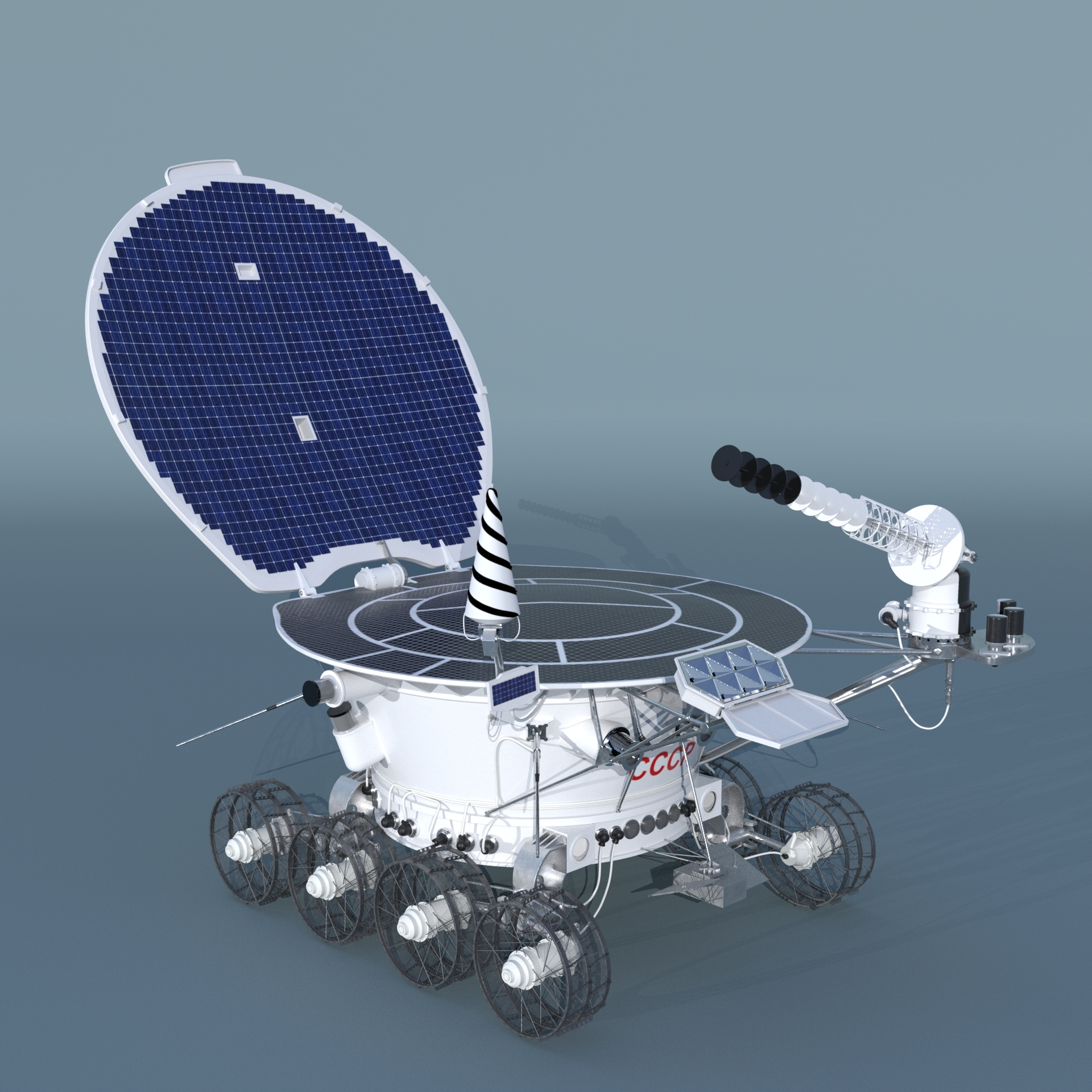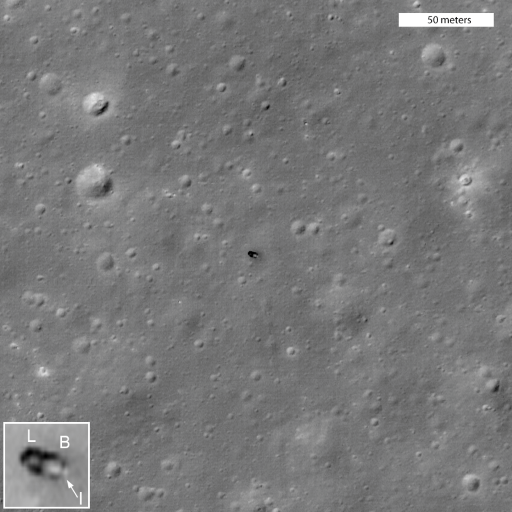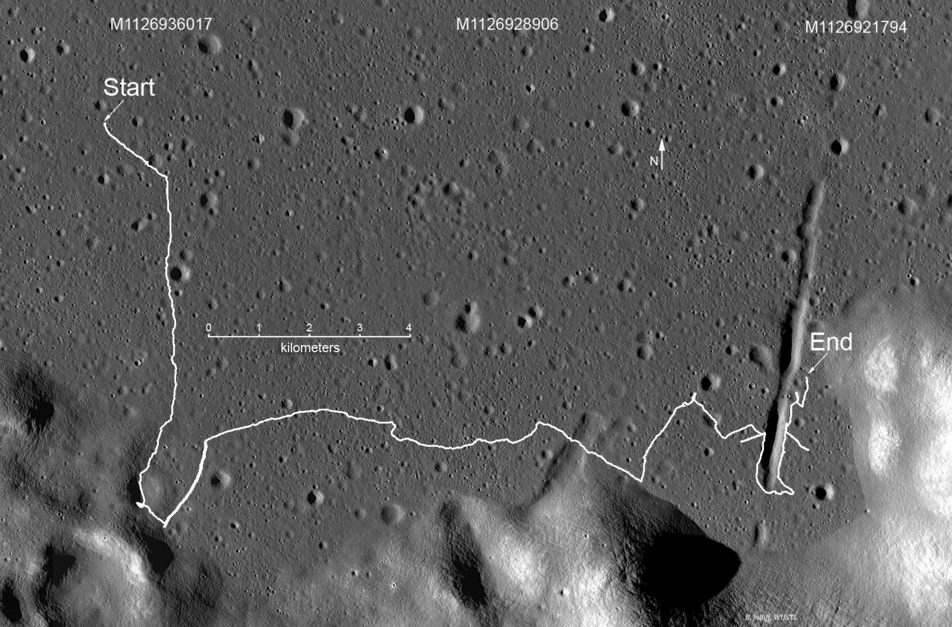Who owns the moon? One man's lunar claim
It's an only slightly tongue in cheek claim from entrepreneur (and private astronaut) Richard Garriott.

Earth's cold moon looms as hot property, as NASA and other organizations work to establish human outposts on the lunar surface in the not-too-distant future.
And with that promise comes a likely upsurge of legal issues regarding tapping the moon's resources — especially the water ice that's thought to be abundant on the permanently shadowed floors of polar craters.
This is a 21st century, front-and-center discussion, but it's part of a decades-old dialog: Who can lay claim to space and, perhaps more pressingly, who owns the moon? That question was tackled in an Oct. 18 video conversation sponsored by the New York-based Explorers Club.
Related: The search for water on the moon (photos)
Off-world honors
Richard Garriott is president of the Explorers Club, a founding and well-heeled father of the video game industry, a commercial spaceflight industry pioneer, an astronaut who paid his own way to the International Space Station in 2008, and an adventurer who has traveled around the globe, from the jungles of the Amazon to the South Pole to the deepest point in Earth's ocean.
And Garriott would like to add another high-profile line to his resume.
Speaking "only slightly tongue in cheek, I will say that I own the moon," Garriott said during the recent Explorers Club event. "I won't lay claim to the whole moon," he added. But he believes he has a fairly unique and supportable claim to a small part of Earth's nearest neighbor.
Get the Space.com Newsletter
Breaking space news, the latest updates on rocket launches, skywatching events and more!
That declaration stems from his plunking down $68,500 in 1993 to purchase both the Soviet Union's Luna 21 lander and its Lunokhod 2 rover, which wheeled onto and across the moon.
The deal was struck during a Sotheby's space auction in New York. For all that "moon moolah," he got a photograph of a Lunokhod 2 model and a set of documents in both Russian and English, including a deed of title transfer as well as certification of ownership.
"I purchased Lunokhod as an object that is still sitting on a foreign celestial body. So, it's the first time an object was sold that is not on the Earth," Garriott said.

Last telemetry
The Soviet Union's Luna 21/Lunokhod 2 ensemble launched on Jan. 11, 1973. The landing occurred on Jan. 15 of that year in Le Monnier Crater, on the eastern margin of Mare Serenitatis ("Sea of Serenity").
Once it rolled off Luna 21, Lunokhod 2 operated for about four months. Tele-driven by controllers on Earth, it maneuvered over the craggy lunar scene while relaying panoramic images and thousands of television pictures.
Jay Gallentine, a space historian and author, told Space.com that Lunokhod 2 differed from the Soviet Union's earlier rover, Lunokhod 1 (which operated from mid-November 1970 to mid-September 1971, within Mare Imbrium), in several major ways. For example, Lunokhod 2 was heavier and carried more experiments; its front navigation cameras were mounted higher to improve perspective; it had more efficient solar panels; it could move twice as fast; it relayed surface imagery back to Earth faster; and it could deal with larger obstacles.
Lunokhod 2 had eight wheels. A top-side movable lid on the rover provided solar power. When the lid was opened, the solar cells collected energy to operate the rover. At night, the lid was closed and a fluid heated by the decay of polonium-210 kept the rover warm.
On May 9, 1973, Lunokhod 2 experienced a "dusting" of its solar cap and radiator-cooler, after it came in contact with a crater wall and was showered with lunar dirt and gravel. That incident apparently rendered the rover inoperable; it last sent telemetry information home on May 10.

Active use
In his Explorers Club discussion, Garriott noted that Lunokhod 2, aka "Moonwalker," is still in use, after a fashion.
"Even though the batteries on it [Lunokhod 2] have failed, there is a set of reflective mirrors that are still used to this day by a variety of telescopes around the world … bouncing lasers off of it … used to detect the Earth-moon distance and some wobble of the moon," Garriott said. "So this is far from space junk. It is still in active use."
Beyond ownership of Lunokhod 2, Garriott asserts that he can own the lunar regolith the rover sits upon, or he at least controls the dirt underneath both the rover and the Luna 21 lander that deployed the wheeled automaton.
Trackway
And there's more. Garriott underscored the fact that his rover trundled some 25 miles (40 kilometers) over the moon's bleak territory. He also owns that trackway, Garriott said. While he added that some claims are more difficult to defend, he made another assertion regarding Lunokhod 2's cameras. They photographically surveyed all the land that is visible from the rover's trackway, doing so from an altitude of 6 feet (1.8 meters) above the moon.
"So it could be reasonable for me to claim not just the 40 kilometers of trackway but everything that this vehicle has surveyed," Garriott said.
Related: The top 10 Soviet and Russian space missions

Welcome mat
Both Russia and the U.S. have already chimed in concerning their lunar landing spots, advising that they are off limits to incoming traffic for historical and heritage purposes. That means the privately owned Lunokhod 2 exploration zone can offer a welcome mat, Garriott said.
"If one of these private rovers made it to the moon, landing near our site," said Garriott, "we would then have economic exchange. I would say I'll pay you handsomely for any data or photographs of any of my rover, my lander, my trackways, my property. But, by the way, I also hope that you will pay me access rights to be on my property. Therefore, we will have exchanged economic interests," he said.
"For people who think this is all hypothetical, even though I mention my claim slightly tongue in cheek, I actually think it brings up serious issues," Garriott said. "But these issues are happening faster than people might realize."
Leonard David is author of the book "Moon Rush: The New Space Race," published by National Geographic in May 2019. A longtime writer for Space.com, David has been reporting on the space industry for more than five decades. Follow us on Twitter @Spacedotcom or on Facebook.
Join our Space Forums to keep talking space on the latest missions, night sky and more! And if you have a news tip, correction or comment, let us know at: community@space.com.

Leonard David is an award-winning space journalist who has been reporting on space activities for more than 50 years. Currently writing as Space.com's Space Insider Columnist among his other projects, Leonard has authored numerous books on space exploration, Mars missions and more, with his latest being "Moon Rush: The New Space Race" published in 2019 by National Geographic. He also wrote "Mars: Our Future on the Red Planet" released in 2016 by National Geographic. Leonard has served as a correspondent for SpaceNews, Scientific American and Aerospace America for the AIAA. He has received many awards, including the first Ordway Award for Sustained Excellence in Spaceflight History in 2015 at the AAS Wernher von Braun Memorial Symposium. You can find out Leonard's latest project at his website and on Twitter.








